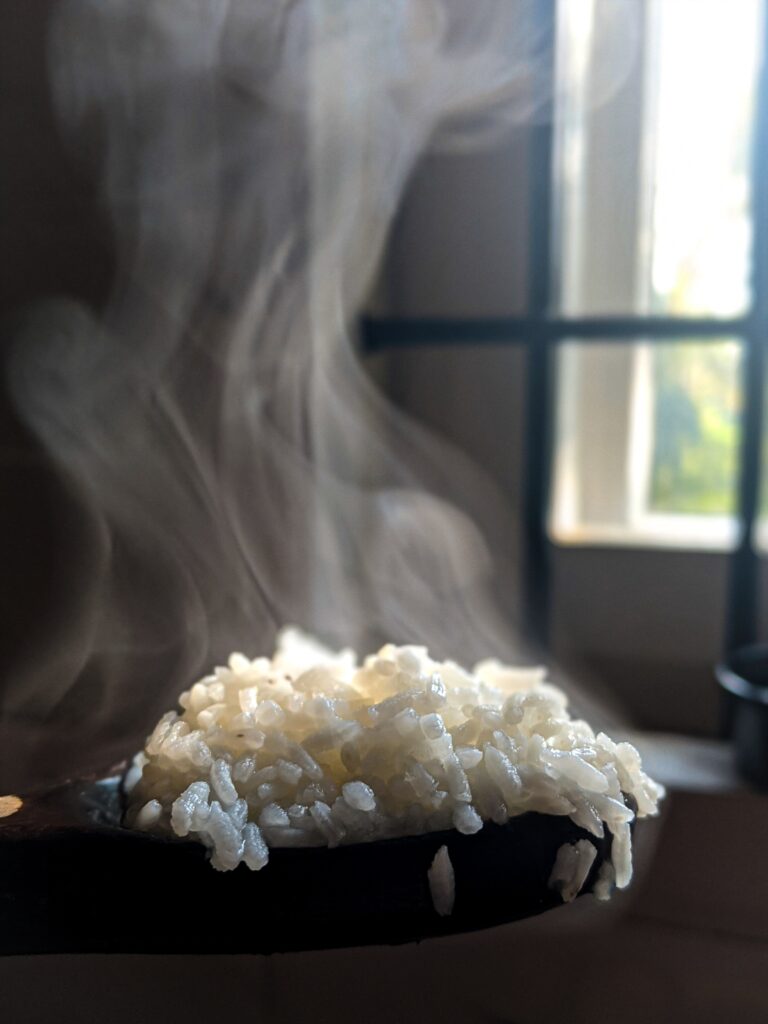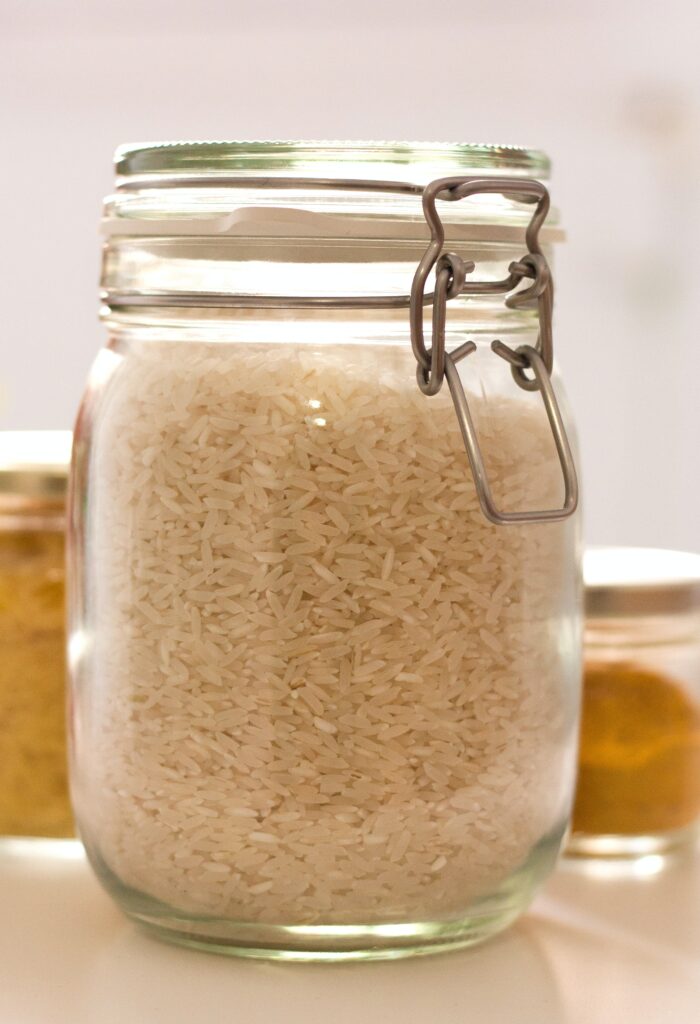In Ayurveda, food is considered medicine. Foods are categorized according to their taste, their effects on doshas, as well as their effect on the tissues. This is why when choosing foods, it is important to understand the nutritional and Ayurvedic properties of foods. For centuries rice has formed an essential component of the Indian diet. It is a staple food of India, with most Indian homes serving the same day every day.
Different forms of preparation of rice are used in Indian custom-Rice roasted directly in fire is consumed with salt or spice. Rice flour is used for making chapattis, soups, and chhilla (pancake). Pressed or flattened rice (poha) is used to make Indian breakfast.
Among all varieties of rice, brown rice or red rice provides the most benefits for your health and nutrition. Brown rice is considered healthier as it is unprocessed (unpolished) and contains more nutrition and vitamins than other forms of polished rice. It also has a “medium” glycemic index, which is lower than other varieties of rice, and thus better suited for those who suffer from diabetes.

According to Ayurveda and online ayurvedic doctor consultation, old rice has proved to be a great healing food, and hence it is recommended to every human being. There are many varieties of rice available and several methods of cooking it. Out of several varieties of rice, the most common are polished rice, unpolished rice, boiled rice, and basmati rice. The ancient texts of Ayurveda provide a detailed analysis of the effects of both the variety and the processing of rice on our individual mind/body constitutions.
When you take Ayurveda doctor online consultation, it recommends avoiding excess consumption of rice that is parboiled, instant, or pre-cooked because it has less nutrition and less Pranab or life energy in it. Rice contributes a sweet taste, according to Ayurveda. It is light, soft, smooth, and nourishing food. It is cooling in nature. Rice is generally good for balancing Vata and Pitta. However, old rice does not increase Kapha. Charak Samhita praises the medicinal value of certain varieties of rice – to balance or pacify all the mind/body constitutions (Vata, Pitta, and Kapha) to strengthen, revitalize and energize the body, regulate blood pressure, and prevent skin diseases and premature aging.

AYURVEDIC PROPERTIES OF RICE IN GENERAL
Rasa (taste): Sweet
Virya (potency): Cooling
Vipaka (post-digestive effect): Sweet
Guna (qualities): Unctuous, nourishing, and strength promoting. Brown rice is light to digest, and polished white rice is slightly heavy to digest.
Dosha Karma (Actions on the doshas): Balances Vata and Pitta and increases Kapha. But old rice does not increase Kapha.
“Old rice” (one-year maturity after harvest) versus “New rice” (freshly harvested).
Freshly harvested rice is hard to digest, whereas 1-year old rice is lighter, and 2-year old rice is even more excellent in quality. Also, the Ayurveda text explains that old rice is wholesome in diabetes and obesity. Ayurveda recommends the storage of rice in moist free airtight containers.
Nowadays, we’re eating newer and newer rice which is becoming harder for us to digest.
For the preparation of rice, the Ayurvedic texts explain that dey roasting ( dry overheat) certain varieties of rice can make them “light” to digest and hence beneficial when the digestive fire is low. In addition, there are references to the digestive benefits of soaking rice before cooking it. Soaking the rice for At least one hour before cooking then will make it lighter for digestion.
SOME BENEFITS OF RICE, AS MENTIONED IN AYURVEDA TEXTS
From the Ayurveda point of view, rice provides the basis for a wide range of healing gruels. Rice was prepared as a thin stew with specific spices to treat different illnesses.
• Khitchari, made of old rice and mung, is beneficial to a person suffering from fever to stomach disorders.
• Rice gruel mixed with ghee or bitter is advised throughout pregnancy. As rice, ghee and butter are cooling and anabolic; they nourish the mother – to be as well as help in the proper growth of the fetus.
• Old rice is beneficial in diabetes and obesity.
• Indications of rice wash water (Tandulodaka) are also mentioned in many disorders like bleeding disorder, luecorrhoea, etc.

SHASTIKA RICE
Shastika is a variety of rice, which matures in 60 days. In Ayurveda, Shastika is mentioned in Vrihi group under Shuka Dhanya. Navara is the Malayalam name for Shastika. It belongs to Oryza group. Navara rice is considered a superior variety of rice in India. Morphologically it is similar to ordinary rice with husk color varying from golden yellow to brownish-black. Although presently it is executive to Kerala, there are many references in Ayurveda texts about its distribution in various parts of India.
There are two varieties of Shastika rice – one that matures at the end of 60 days and at the end of 90 days. Shastika grows in semi-dry conditions, highly resistant to drought.
INDICATIONS
• It can be used as a main meal.
• Because of its unctuous and quality of pacifying burning sensation, it is beneficial in thirst and fever.
• When it is cooked in more water, it is beneficial in diarrhea, Grahani (Irritable Bowel Syndrome), and in other digestive disorders.
Reference: Charak Samhita
Muskan Soni
Become A USER In Aayush Bharat, Download The AAYUSH BHARAT PATIENT APP :
Click Here
Connect with AAYUSH BHARAT ON :
Twitter, Facebook, Instagram, Website, YouTube, Telegram Channel, Blog, LinkedIn, Quora, WhatsApp

0 Comments